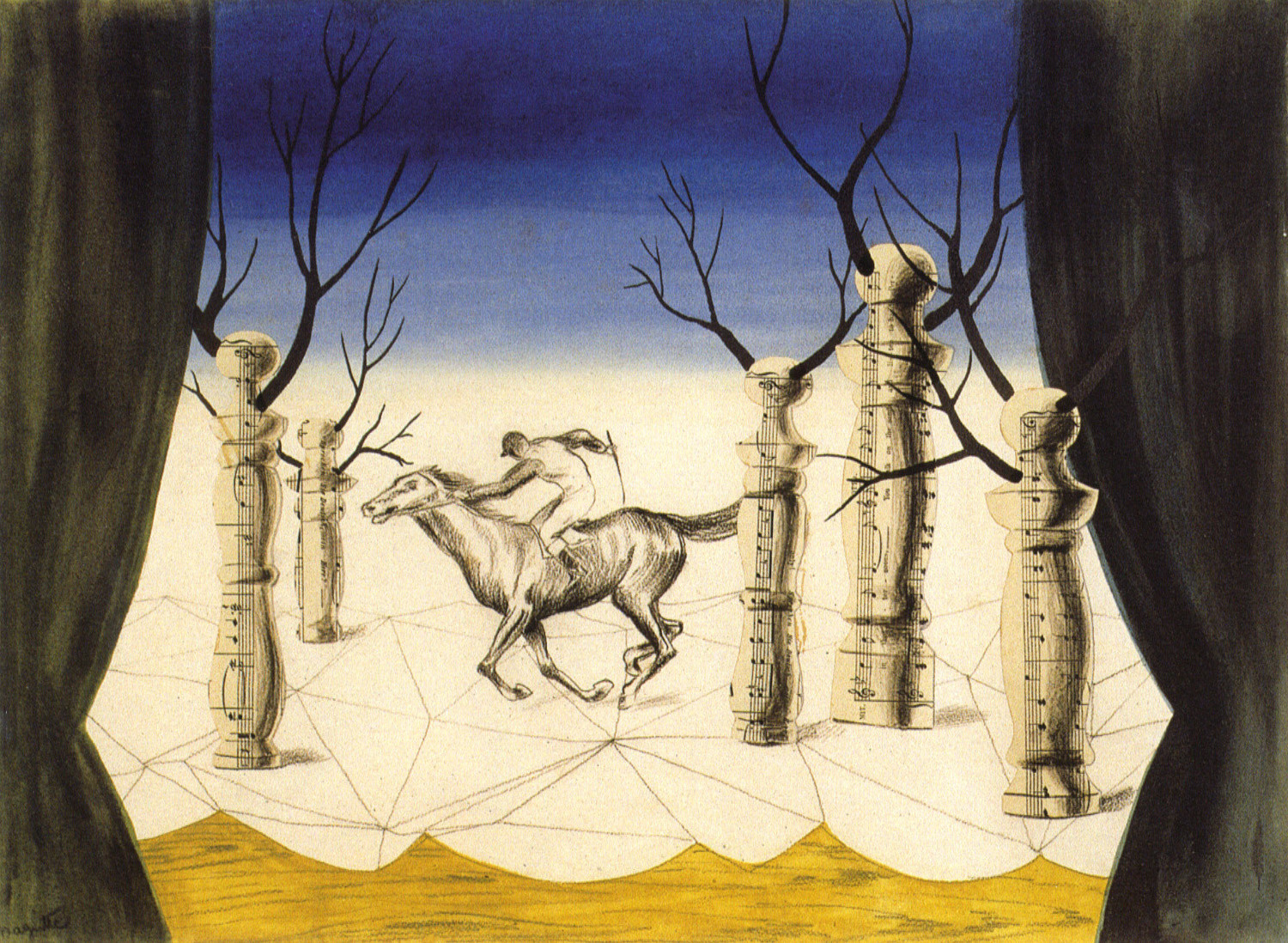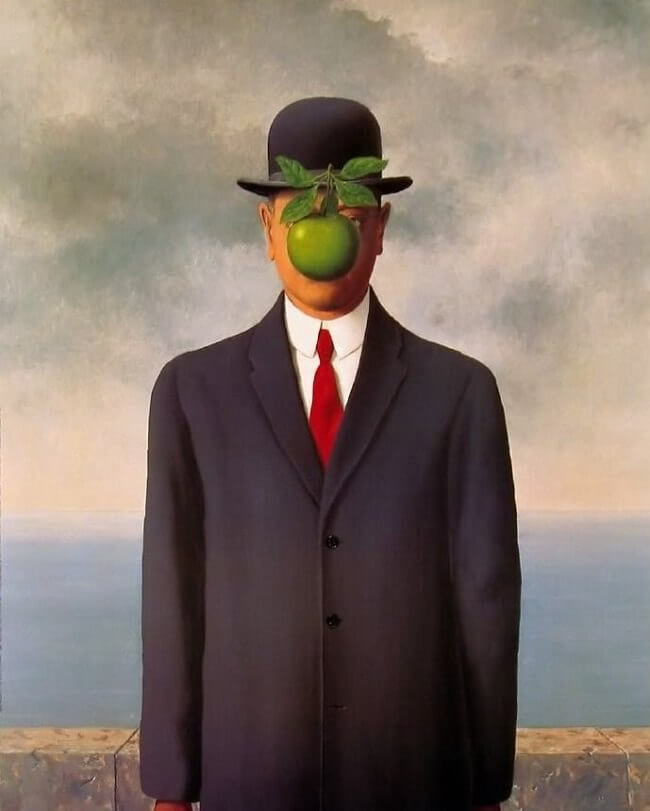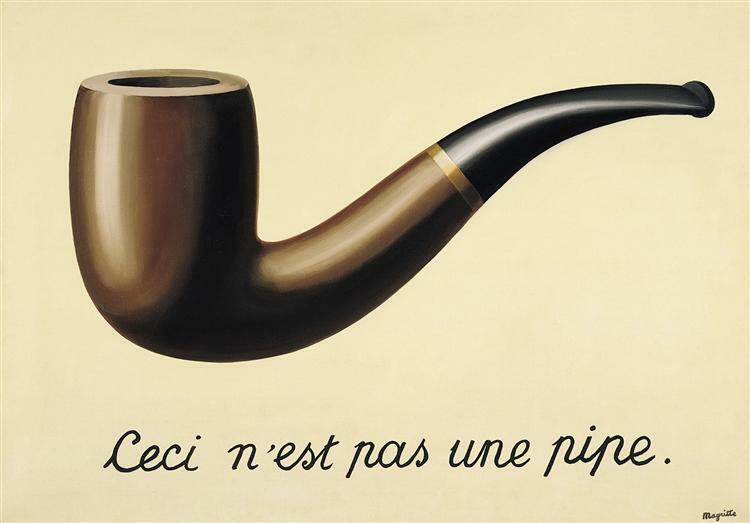You may not know the name Rene Magritte but you certainly are aware of the stunning, bizarre, challenging, and unique artwork that he created during his lifetime. WIth his one-of-a-king style, Magritte was able to make the ordinary extraordinary and force viewers to question the world around them. But how did he do that and what was his secret recipe? Let's find out!
Magritte is synonymous with the term mysticism. His ingenious works blurred the lines between reality and illusion, stimulating the imaginations of observers and changing the way they interpreted art.
Stylistically, Magritte started his career as an Impressionist. He spent two years at the Academy of Fine Arts in Brussels, which he left because he did not find the environment inspiring. After departing from the Academy, he moved toward the styles of modernism, futurism, and later cubism.

As he later admitted that the picture "The Lost Jockey" (1926) was a critical turning point in his development and the beginning of his period of surrealism. He often combined images and words to achieve a visual impression that would shake human perception. Magritte wanted to distance himself from the stylistic distractions of most art of the time. Therefore, he did not experiment with new techniques but instead focused on illustrative techniques that brought clear focus to the content of his work.
Magritte’s greatest role model was the Italian painter, Giorgio de Chirico, and he found inspiration from his realistic and pure representation of objects. Like De Chirico, Magritte wanted to turn everyday scenes upside down: he would therefore call the black ink stain in front of the closed door "Leaving the School".

Without a doubt, “The Son of Man” is one of Magritte's most recognizable paintings. A memorable image of a man in business attire - a black coat, shirt with a tie, and a hat. Meanwhile, a paradoxical object, a green apple, hides the person's face.
The painting is most often interpreted as a symbolic image of a modern man: a businessman, who remains a descendant of the first human Adam. The apple is, of course, analogous to temptations and sinful deeds. There is a conflict between the hidden and the visible, as the artist said, suggesting that people often hide their real faces in life.
Magritte would want each of us to individually interpret his work. Everyone who looks at the "Son of Man" can reveal their own vision of life and personal philosophy, just as the artist intended. This work of art appeared in his late period of 1958 to 1965, and Magritte himself refers to this time in his career as when he finally found his child.
When Magritte’s entire collection is put together, one gets the impression that he was constantly evolving, while still essentially remaining the same. Hiding the face is a motif that can be found in a large amount of his work. As Magritte said himself: "At least he partially hides his face. So, you have an obvious face, an apple, that hides the visible but hidden, face of a person. It's something that happens all the time. Everything we see hides something else. We always want to see what is hidden by what we see. There is an interest in what is hidden and what is not visible to us. That interest can take the form of an intense feeling, a kind of conflict, one might say, between what is visible that is hidden and what is visible that is present".
His motifs are usually considered to be as ordinary and extraordinary as himself. Clouds, pipes, bowler hats, and green apples repeatedly make appearances. By bringing these objects into unexpected situations and placing them in unusual positions, he created mystery in his paintings. He invited viewers to interpret in their own ways what he wanted to say and challenged reality.
Would you believe your eyes when you see a picture of a pipe that clearly says it's not a pipe? René Magritte often played with the meaning of both pictures and words. He stated about his painting known as Ceci n'est pas une pipe that he would lie if he wrote that it was a pipe because if he asked someone to light that same pipe for him, that person would not be able to do it because it is the image of the pipe. Hence the official name of the piece is Betrayal of the Painting because the artist was exploring the idea that our eyes often deceive us.

The artist envisioned his painting as a critical tool that could challenge the perception and engage the viewer's mind. It forced spectators to think things in an active, not passive, way. As a critical thinker, people can find, analyze, and solve problems instead of trying to spot them by instinct and intuition. The ability to form critical thinking brings many benefits, such as systematic problem solving, understanding the logical connections between ideas, and acquiring values and beliefs based on reality.
Magritte’s method of separating objects from their names revealed that language is a skill, full of pitfalls and uncertainties. In search of the mystery that surrounds objects, he created scenes that took everyday reality as their starting point and then followed a logic different from what was expected.
This mystery prompts the viewer to question the images and their meanings. However, questioning is not the same as explaining. And therein lies the mystery and challenge presented by Magritte. First, the observer surrenders to the artwork and takes it at face value. However, after that initial impression, the viewer must then engage in deeper reasoning.
According to Magritte, the mind sees with two different senses. It sees with the eyes and then sees without the eyes.
The fascinating and challenging images in Magritte's work stem from the eternal mystery in the visible world. Magritte showed the universe with clarity, and then forced viewers to uncover secrets and questions of the world through logic of thoughts and associations.
For years now, people have been impressed and often stumped by the creation of this iconic painter. So what do you think about Magritte? Does his works speak to you, challenge you, and make you discover deeper meanings in the world around you?
